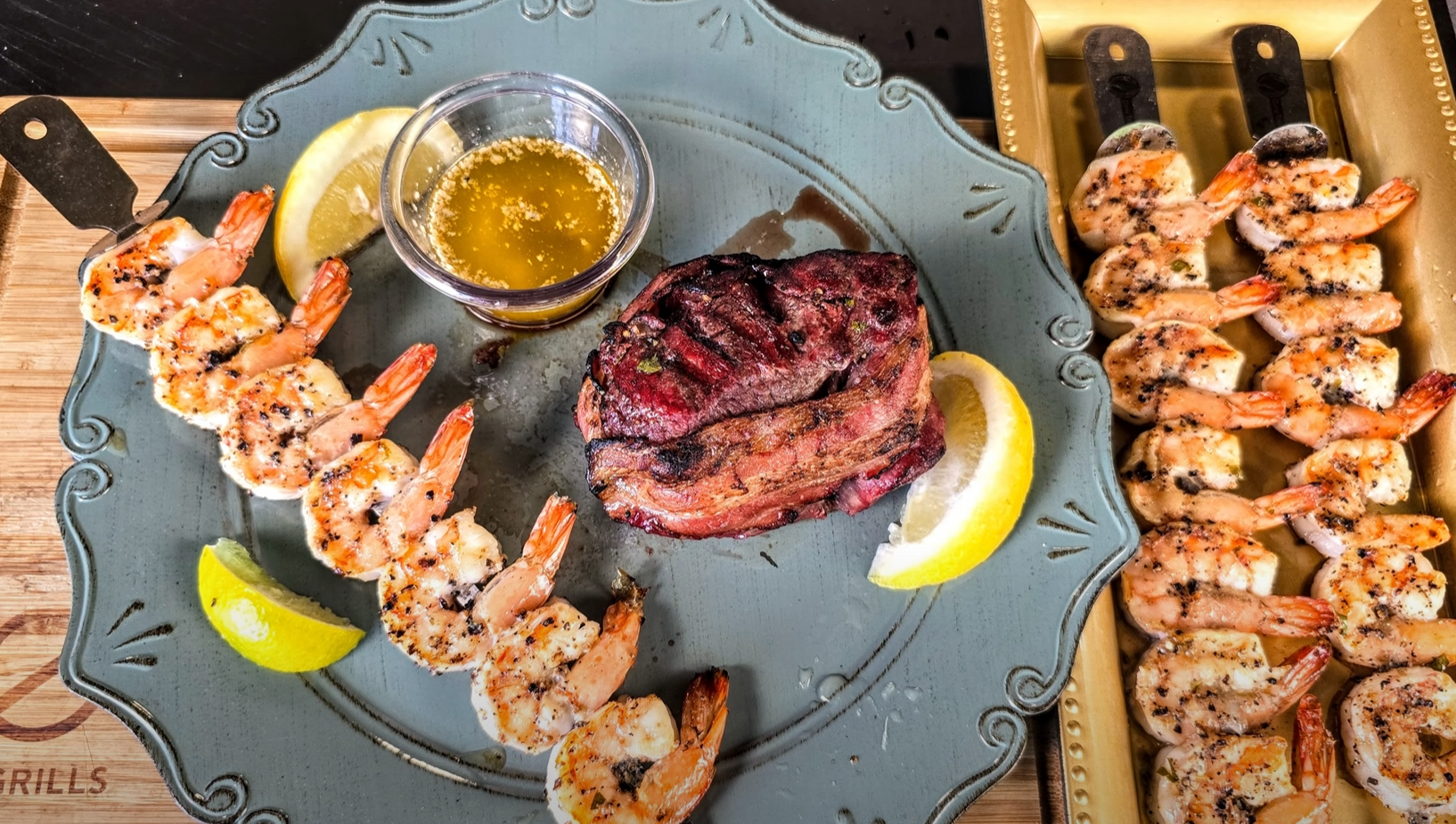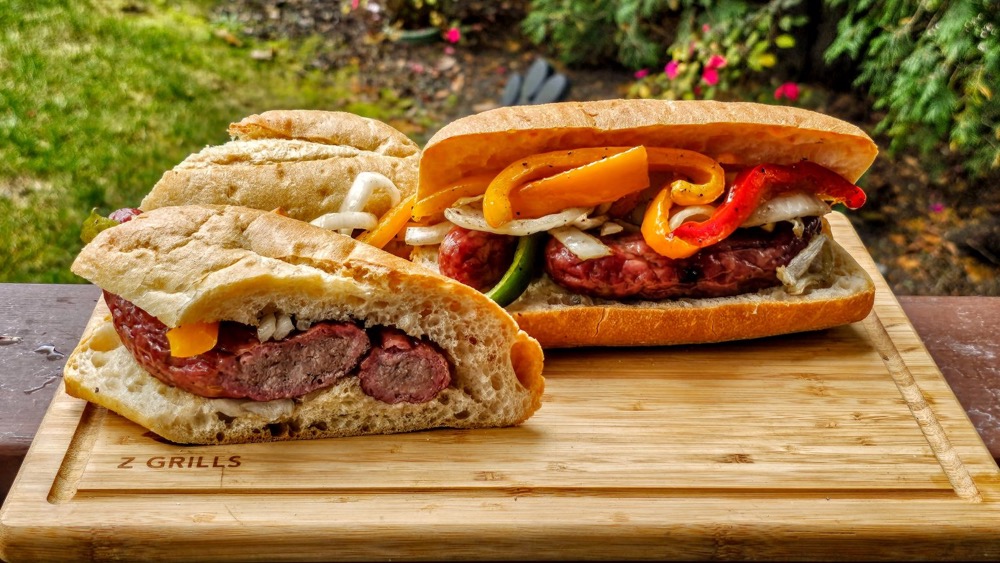
Whether you’re new to cooking on your pellet smoker or a seasoned grill master, you should know that determining the ideal time and temperature for cooking is mostly a science—but it’s an art, too.
If you want to know exactly what factors come into play and how they affect your cook time and temperatures, you’re in the right place.
We’re going to cover:
- everything that affects cooking time
- vital food safety information
- recommended times and temperatures
With this information, you’ll have more tricks in your toolbox when cooking on the grill, so your friends, family, and yourself can enjoy the best cuts of meat from your pellet smoker.
Table of Contents
5 Things That Affect Pellet Smoker Cooking Time
Various factors affect cook time on a pellet smoker, and it’s important that you know all of them. Here are five key elements that determine how long you’ll need to grill your meats, starting with things you have the least control over.
1. The Altitude
No matter where you live, altitude comes into play. However, most recipes and advice are made for people who live at lower altitudes, so you might never have to think about it.
If you live in a high-altitude location (like some places in Colorado), you’ll need to use lower temps for longer if you want to preserve the juicy moisture in your meats. The reasoning behind this is that the boiling point of water is lower—which means that moisture will escape the meat quicker.
2. Humidity Levels
Another factor you have little control over is the humidity. Although there’s no way to change your altitude, you could wait for the right weather conditions.
If you’re cooking hot and fast, humidity won’t be a big concern. However, when you cook low and slow, your meat releases water, and that can cause it to cool down, slowing the cooking process.
Low humidity levels cause your meat to release more moisture (and cool faster), while high humidity environments encourage meat to retain water.
One technique that gives you great control over the humidity in your cooker is the use of water pans. As the water in the pans evaporates into your cooker, the water in your meat has nowhere to go.
3. The Type of Pellets You Use
The type of pellets you use in your pellet smoker can also affect cook time because different kinds of pellets burn at different temperatures.
Hardwood pellets burn at a lower and more consistent temperature than softwood pellets, and 100% hardwood pellets with no filler ingredients will deliver better results for smoking on a pellet grill.
In addition to choosing hardwood pellets over softwood pellets, you want to use completely dry pellets. Keep them stored in a 5-gallon bucket with a lid (not in their original bag) away from water and heat.
4. Your Meat
Perhaps one of the single largest factors that will affect your pellet smoker grill time (other than temperature, of course) is the type of meat you use—and we’re not just talking about chicken versus beef.
Size, Weight, and Shape
When you choose a cut of meat, whatever it may be, you need to consider how the thickness, size, weight, and shape will affect cooking time on your top rated pellet grills.
Use common sense here. A larger or thicker cut of meat will need more time on the grill, while a smaller, thinner cut will need less. On oddly shaped cuts, you’ll want to ensure the thickest part is fully cooked, which may mean slightly overcooking thinner parts on the same cut of meat.
Bone-In vs. Bone Out
Bone-in meats will also take longer to cook than boneless meats of the same size and type.
Frozen vs. Thawed
Cooking a cut from frozen will also take more time than cooking meats that are already thawed since you’ll essentially need to thaw the meat in your cooker before the real cooking can get started.
Fat Content
A higher fat content will also increase cook time, but when using a pellet smoker, the wait is well worth it. You need more time (or more heat) for a fattier cut of meat if you want the fats to melt into tender, juicy goodness.
Marinades and Rubs
Adding different rubs and marinades will also affect pellet smoker cook time since they can lock in or release moisture from the meat, increasing or decreasing the time needed to cook the meat.
Meat Type and Your Goals
The type of meat you’re cooking and how you want it to turn out will also determine how long (and how hot) you should cook your food.
For example, at 250 °F, chicken thighs will only take about 1.5 hours to smoke, while beef short ribs will take 4-6 hours at the same temperature. Lobsters can be ready in as little as 5 minutes at 275 °F, and salmon takes about one hour when smoked at 225 °F.
Keep in mind that you’ll need to care for your meats very differently depending on how you want them. A beef jerky recipe is a lot different than a brisket recipe, even though you’re still dealing with beef. So, before you cook, read up on your particular cut of meat, times and temps, and tips you should know before smoking.
5. Cooking Temperature
Finally, adjusting the cooking temperature will have a great impact on your pellet smoker’s cooking time.
Cranking up the heat will yield faster results while cooking on low heat for a long time is ideal for delivering that desired flavor of slow-roasted smoked meats.
Later, we’ll give you a complete guide to cooking times and temperatures for different meats, but when it comes down to it, the best cooking temperature for you will be about your personal preference.
So, don’t be afraid to experiment.
Food Safety: Internal Cooking Temperatures for Pellet Smoker
Here’s a quick guide to help you, your family, and your friends safe when you cook on your pellet smoker.
| Meat Type | Minimum Internal Temperature |
|---|---|
| Ground Beef, Pork, Veal, and Lamb (Includes Sausage, Hot Dogs, and Hamburgers) | 160 °F |
| Ground Turkey or Chicken (Includes Sausage, Hot Dogs, and Hamburgers) | 165 °F |
| Fresh Beef, Veal, and Lamb Cuts | 145 °F (let rest for 3 minutes) |
| All Poultry | 165 °F |
| Fresh Pork (Including Fresh Hams) | 145 °F (let rest for 3 minutes) |
| Precooked Hams | 165 °F |
| Fresh Fish | 145 °F |
| Shrimp, Lobster, Crab, and Scallops | Until flesh is pearly white and opaque |
| Clams, Oysters, and Mussels | Until shells open |
Other Food Safety Tips
In addition to measuring the internal temperatures of your smoked meats before you serve them, here are a few basic tips you should always follow when cooking:
- Keep cold food cold.
- Keep hot food hot.
- Separate raw and cooked food—and that includes your utensils.
- Don’t let your meats sit in the sunlight.
How to Smoke Beef
The cook times and temperatures for beef vary. Here are some popular cook times and temperatures for your pellet smoker for beef:
- Cook beef jerky at 180-200 °F for 1-2 hours.
- Cook prime rib at 250 °F. Cook for 15 minutes per pound.
- Cook short ribs at 250 °F for 4-6 hours.
- Cook sliced brisket at 250 °F. Cook for 1.5 hours per pound.
- Cook burgers between 225-250 °F for 30-40 minutes.
Recommend Reading: Top 10 Beef Recipes For Dinner

How to Smoke Pork
Pork smokes best at 250 °F. Here are the cook times for pork at this temperature:
- Cook bacon for 45-60 minutes.
- Cook pork butt for 1.5 hours per pound.
- Cook pork loin for 2.5 hours.
- Cook pork shoulder for 1.5 hours per pound.
- Cook baby back ribs for 2 hours.
Recommend Reading: How to Smoke a Pork Loin on a Pellet Grill

How to Smoke Chicken
Keep in mind these cook times can vary, but these estimated smoke times and temps are a great place to start:
- Cook chicken legs quarters at 250 °F for 2.5 hours.
- Cook chicken thighs at 250 °F for 1.5 hours.
- Cook a whole chicken at 250 °F for 4 hours.
- Cook chicken wings at 275 °F. Cook for 1.5 hours per pound.
Recommend Reading: Top 20 Best Chicken Recipes You Must Try

How to Smoke Lamb
Lamb is one of the best meats you can smoke in your pellet grill, but it’s often the most overlooked. Here’s what you need to know:
- Cook leg of lamb at 250 °F for 2-3 hours.
- Cook lamb chops at 225°F for 45-60 minutes.
- Cook lamb loin at 225°F for 1 hour.

Final Thoughts: Grilling on a Pellet Smoker is Art, Science, And Common Sense
If you want to grill great meats on a pellet smoker that will impress even the pickiest eaters, then use your common sense, practice, and keep learning as you go.
Start by doing your research on which meat you want to smoke. Learn about the cut, the best techniques for smoking, the best pellet flavors, the times and temps, and get grilling!
Knowing the facts will get you far, but practice and skill will get your even further. And forget to use your common sense.










